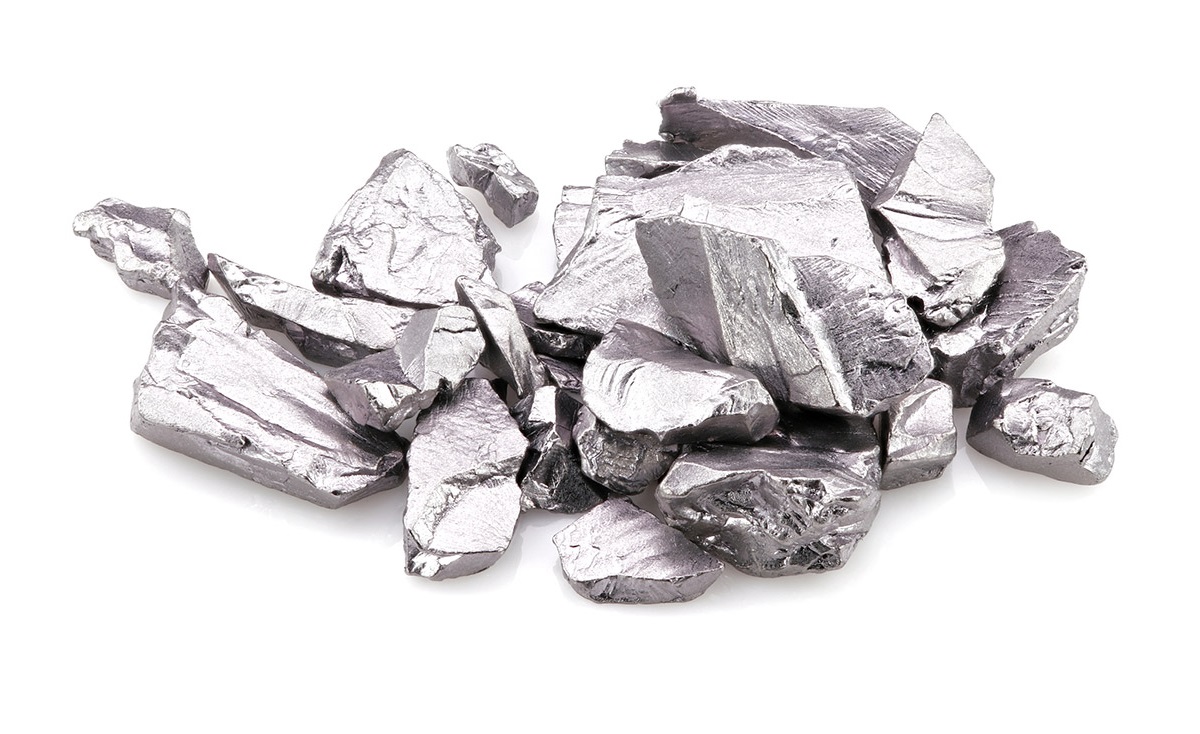
Tantalum is a fascinating element that has captured the interest of scientists and industry professionals alike. This rare metal, with its impressive corrosion resistance and high melting point, has found its way into a wide range of applications, from electronics to medical devices. In this article, we will explore 18 interesting facts about tantalum that showcase its unique properties and diverse uses. From its discovery and naming to its role in modern technology, tantalum continues to intrigue and inspire with its remarkable characteristics. So, let's delve into the world of tantalum and uncover the intriguing details that make it such a remarkable element. Excited to learn more? Let's get started!
Key Takeaways:
- Tantalum, named after a Greek mythological figure, is a rare and valuable metal with a high melting point. It’s used in electronics, medical implants, and sustainable energy technologies, playing a crucial role in modern technology and environmental sustainability.
- Tantalum’s resistance to corrosion and its ability to conduct heat and electricity make it an essential material in various industries. From electronic devices to high-temperature furnace components, tantalum’s unique properties contribute to advancements in technology and industrial processes.
Tantalum is named after Tantalus, a figure in Greek mythology.
Tantalum is named after Tantalus, a character from Greek mythology who was condemned to stand in a pool of water beneath a fruit tree with low branches, both of which receded whenever he reached for them. The name was given to the element due to the difficulty of extracting it from mineral samples.
Tantalum has a high melting point of 3017 degrees Celsius.
Tantalum possesses an exceptionally high melting point, surpassed by only a few other elements. This property makes it extremely valuable in applications that require high-temperature resistance, such as in the production of aircraft engines and nuclear reactors.
Tantalum is a rare, hard, blue-gray, lustrous transition metal.
Tantalum is classified as a transition metal, and it is highly resistant to corrosion and has a lustrous appearance. Its rarity and unique properties make it a sought-after material in various industries, including electronics, aerospace, and medicine.
Tantalum is highly resistant to corrosion.
Due to its exceptional resistance to corrosion, Tantalum is often used in chemical processing equipment, such as in the production of acids and corrosive chemicals. This corrosion resistance also makes it an ideal material for surgical instruments and implants within the medical field.
Tantalum is commonly used in electronic components.
Tantalum capacitors are widely used in electronic devices such as smartphones, laptops, and digital cameras due to their high capacitance and reliability. These capacitors are essential for ensuring stable and efficient operation of electronic circuits.
Tantalum is often alloyed with other metals.
Tantalum is frequently alloyed with other metals to enhance their properties. Tantalum-tungsten alloys, for example, are used in the production of heating elements for high-temperature furnaces and other industrial applications.
Tantalum is primarily mined in Australia and Africa.
Australia and several African countries, including the Democratic Republic of the Congo, are the primary sources of tantalum ore. The mining and processing of tantalum are subject to strict regulations due to concerns about unethical mining practices and environmental impact.
Tantalum is used in the production of superalloys.
Superalloys containing tantalum are utilized in the aerospace industry for manufacturing components such as turbine blades and other high-stress, high-temperature applications. The addition of tantalum enhances the strength and thermal stability of these alloys.
Tantalum is an excellent conductor of heat and electricity.
Due to its high thermal and electrical conductivity, tantalum is utilized in the production of heating elements, heat exchangers, and electrical components. Its ability to efficiently transfer heat and electricity makes it indispensable in various industrial processes.
Tantalum is biocompatible, making it suitable for medical implants.
Tantalum’s biocompatibility and resistance to corrosion in bodily fluids make it an ideal material for medical implants, such as bone repair plates and cranial implants. Its use in medical devices underscores its importance in improving the quality of life for many individuals.
Tantalum is a conflict mineral.
Due to its scarcity and value, tantalum has been linked to conflicts and human rights abuses in regions where it is mined. Efforts have been made to establish ethical sourcing practices to ensure that tantalum extraction does not contribute to armed conflict or human rights violations.
Tantalum is used in the production of high-capacitance capacitors.
Tantalum capacitors are known for their high capacitance values and stability, making them essential components in electronic devices, telecommunications equipment, and automotive electronics. Their reliability and compact size contribute to their widespread use in modern technology.
Tantalum has a stable oxide layer that enhances its corrosion resistance.
The formation of a stable oxide layer on the surface of tantalum contributes to its exceptional resistance to corrosion, even in harsh chemical environments. This property is crucial in applications where materials are exposed to aggressive substances and conditions.
Tantalum is used in the production of specialized alloys for the chemical industry.
Tantalum-based alloys are utilized in the construction of equipment for handling corrosive chemicals and in the production of high-purity reagents. The unique chemical properties of tantalum make it an indispensable material in the chemical processing industry.
Tantalum is ductile and can be drawn into thin wires.
Tantalum’s ductility allows it to be drawn into thin wires, which are used in the production of filaments for evaporating metals such as aluminum. These filaments find applications in the production of electronic components and in specialized lighting sources.
Tantalum is used in the production of high-temperature furnace components.
Tantalum’s high melting point and resistance to chemical attack make it an ideal material for the construction of high-temperature furnace components, including crucibles and heating elements. These components are crucial in various industrial processes, such as metal smelting and glass production.
Tantalum is a critical material for the electronics industry.
With its unique electrical properties and reliability, tantalum plays a vital role in the electronics industry, contributing to the production of advanced electronic devices and telecommunications infrastructure. Its use in miniaturized components underscores its significance in modern technology.
Tantalum is essential for the advancement of sustainable energy technologies.
Tantalum-based materials are utilized in the production of components for sustainable energy technologies, including fuel cells and solar panels. Its contribution to enhancing energy efficiency and reducing environmental impact highlights its importance in the transition to renewable energy sources.
Conclusion
Tantalum is a fascinating element with a wide range of applications and unique properties. From its high melting point to its corrosion resistance, tantalum plays a crucial role in various industries, including electronics, aerospace, and medicine. As a critical component in electronic devices and surgical implants, tantalum continues to drive innovation and improve the quality of life for people around the world. Its scarcity and ethical mining practices also make it a topic of interest for sustainability and responsible sourcing. With ongoing research and development, tantalum’s potential is yet to be fully realized, promising exciting advancements in technology and materials science.
FAQs
What are the main uses of tantalum?
Tantalum is primarily used in electronic components, such as capacitors and resistors, as well as in surgical implants due to its biocompatibility and corrosion resistance.
Is tantalum a rare element?
Yes, tantalum is considered a rare element, and its scarcity contributes to its value and the need for responsible mining practices.
What makes tantalum a valuable material?
Tantalum’s high melting point, corrosion resistance, and ability to store and release electrical energy make it a valuable material for various industrial and technological applications.
Was this page helpful?
Our commitment to delivering trustworthy and engaging content is at the heart of what we do. Each fact on our site is contributed by real users like you, bringing a wealth of diverse insights and information. To ensure the highest standards of accuracy and reliability, our dedicated editors meticulously review each submission. This process guarantees that the facts we share are not only fascinating but also credible. Trust in our commitment to quality and authenticity as you explore and learn with us.


